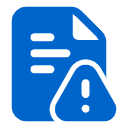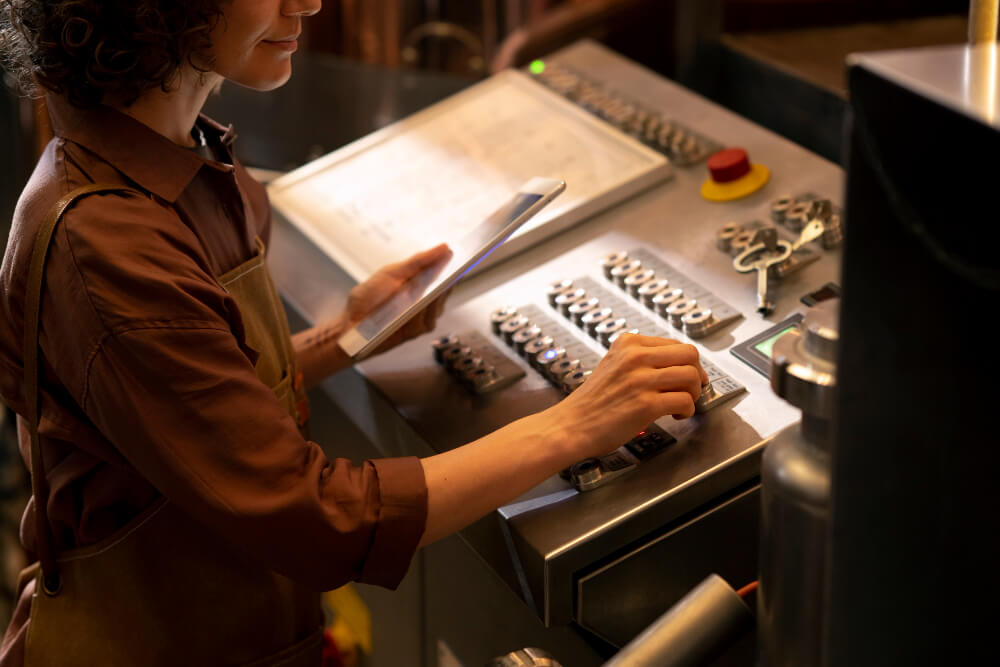Sterling Reduces Costs 62% in 6 Months
Manufacturing Accounts Payable Automation Case Study
Published: Amber Kujur | Updated: October 14, 2025 | Read Time: 5 minutes
Why You Can Trust This Accounts Payable
Automation Case Study
- Based on real manufacturing industry data and benchmarks
- Verified statistics from leading AP automation providers
- Reviewed by finance operations professionals with 15+ years of experience
- Recommended by industry publications and finance forums
Executive Summary: Real Results from AP Automation
This accounts payable automation case study highlights Sterling Manufacturing, a mid-sized automotive supplier with 2,800 employees across four Midwest facilities. By implementing AP automation, Sterling achieved remarkable results in cost reduction, efficiency, and staff productivity.

Invoice Processing Costs Cut
62% ($5.30/invoice)
62% ($5.30/invoice)

Invoice Cycle Time Reduced
82% (14 days → 2.5 days)
82% (14 days → 2.5 days)

Data Entry Errors Eliminated:
87% reduction
87% reduction

Staff Hours Reclaimed
1,200+ hours annually
1,200+ hours annually

Annual Financial Impact
$315,000 in total savings
$315,000 in total savings

First-Year ROI
22% (break-even in 1.5 months)
22% (break-even in 1.5 months)
About Sterling Manufacturing
Sterling Manufacturing is a tier-one automotive supplier specializing in precision machining and stamped components. With four plants in Ohio, Indiana, Michigan, and Wisconsin, the company manages over $42 million in annual procurement spend from 1,200+ vendors.
Before implementing AP automation, Sterling processed 2,500–3,500 invoices monthly using mostly manual methods. Invoices arrived via mail, fax, and email, and were entered manually into a legacy ERP system. Approval workflows were inconsistent across plants.
Key Challenge:
Manual processes limited scalability, caused errors, and trapped staff in administrative work instead of strategic finance roles.
Before implementing AP automation, Sterling processed 2,500–3,500 invoices monthly using mostly manual methods. Invoices arrived via mail, fax, and email, and were entered manually into a legacy ERP system. Approval workflows were inconsistent across plants.
Key Challenge:
Manual processes limited scalability, caused errors, and trapped staff in administrative work instead of strategic finance roles.

Challenges Highlighted in This Accounts Payable Automation Case Study
1. Slow Invoice Processing
Average processing time was 14 days, well above the 5–7 day industry standard. This slowed vendor payments and missed early-payment discounts.
2. High Cost Per Invoice
Cost per invoice: $8.50, compared to an industry target of $2–3, resulting in $306,000 annually spent on routine tasks.
3. Data Quality Issues
Manual entry caused 8–12% errors, requiring 400+ hours annually for corrections.
4. Missed Early-Payment Discounts
Slow processing resulted in $120,000–$150,000 in lost discounts annually.
5. Lack of Real-Time Visibility
Finance leadership had no real-time insight into payables, making cash flow forecasting challenging.
6. Staffing Constraints
The AP team of eight was overwhelmed, limiting scalability and hiring options.
Bottom Line:
Without automation, manual processes don’t scale, errors compound, and talented staff cannot focus on strategic work.
Why Sterling Adopted AP Automation Outsourcing
Three factors drove the decision:
Talent Shortage: Hiring AP staff failed twice, showing a lack of qualified candidates.
Board Mandate: Leadership required a 15% G&A expense reduction in 18 months.
Peer Success: Competitors demonstrated significant AP automation efficiency gains.
Board Mandate: Leadership required a 15% G&A expense reduction in 18 months.
Peer Success: Competitors demonstrated significant AP automation efficiency gains.
Sterling partnered with Vertex Process Solutions, a provider combining US-based finance professionals with AI-driven technology and SAP ERP integration.
Selection Criteria: Manufacturing expertise, transparent pricing, measurable results, and 24/7 support.
Selection Criteria: Manufacturing expertise, transparent pricing, measurable results, and 24/7 support.
Implementation Roadmap
Discovery & Process Mapping
Audit of existing workflow
Standardization of approval hierarchies and coding
Centralized invoice entry and real-time reporting
Technical Integration
Centralized invoice capture
AI-powered OCR (96% initial accuracy)
3-way matching automation
Intelligent approval routing
SAP integration and real-time dashboards
Cleansing 1,200 vendor master records
Change Management & Training
Training for plant managers, procurement, and finance staff
Dedicated transition manager for 6 months
Pilot & Go-Live
Pilot in one plant
Full rollout across four facilities
Results of AP Automation
| Category | Metric | Before | After / Result | Impact |
|---|---|---|---|---|
| Processing Efficiency | Processing Time | 14 days | 2.5 days | 82% faster |
| Invoices Processed Within 48 hrs | – | 98% | Improved turnaround | |
| Cost Efficiency | Cost per Invoice | $8.50 | $3.20 | 62% reduction |
| Annual Savings | – | – | $185,400 saved | |
| Data Accuracy | Error Rate | 8–12% | 0.8% | 87% error reduction |
| Automation & Discounts | Straight-Through Processing | – | 78% automated | Streamlined workflow |
| Early-Payment Discounts Captured | – | 94% | +$130,000 benefit | |
| Staff Productivity | AP Team Size | 8 FTE | 3 FTE | Optimized team |
| Hours Freed | – | 1,200+ hrs | Time for strategic work | |
| Additional Value | – | – | +$400,000 uncovered | |
| Financial Impact | Total Annual Benefit | – | – | $315,400 |
| Implementation Cost | – | – | $45,000 | |
| Monthly Service Fee | – | – | $8,200 | |
| ROI (First Year) | – | – | 22% | |
| Break-Even Point | – | – | 1.5 months |
Challenges Highlighted in This Accounts Payable Automation Case Study
1. Standardize Before You Automate
Processes must be aligned across locations; automation amplifies consistency.
2. Change Management Matters
Engage stakeholders early and communicate benefits clearly.
3. Choose Vendors Based on Results, Not Price
Select providers with proven expertise and measurable performance.
4. Redirect Freed-Up Capacity Strategically
Redeploy staff to high-value roles for added ROI beyond cost savings.
Conclusion: The Business Case for AP Automation in Manufacturing
This accounts payable automation case study shows that AP automation is more than cost reduction, it’s a driver of operational excellence.
With faster processing, lower costs, improved accuracy, and 1,200+ staff hours reclaimed, Sterling achieved 22% first-year ROI. Finance teams can now focus on strategic initiatives, including spend analysis and supply chain optimization.
Key Takeaways for Finance Leaders:
With faster processing, lower costs, improved accuracy, and 1,200+ staff hours reclaimed, Sterling achieved 22% first-year ROI. Finance teams can now focus on strategic initiatives, including spend analysis and supply chain optimization.
Key Takeaways for Finance Leaders:
- Map and standardize processes first
- Communicate changes clearly to stakeholders
- Select vendors based on expertise and results
- Redeploy staff into strategic roles


